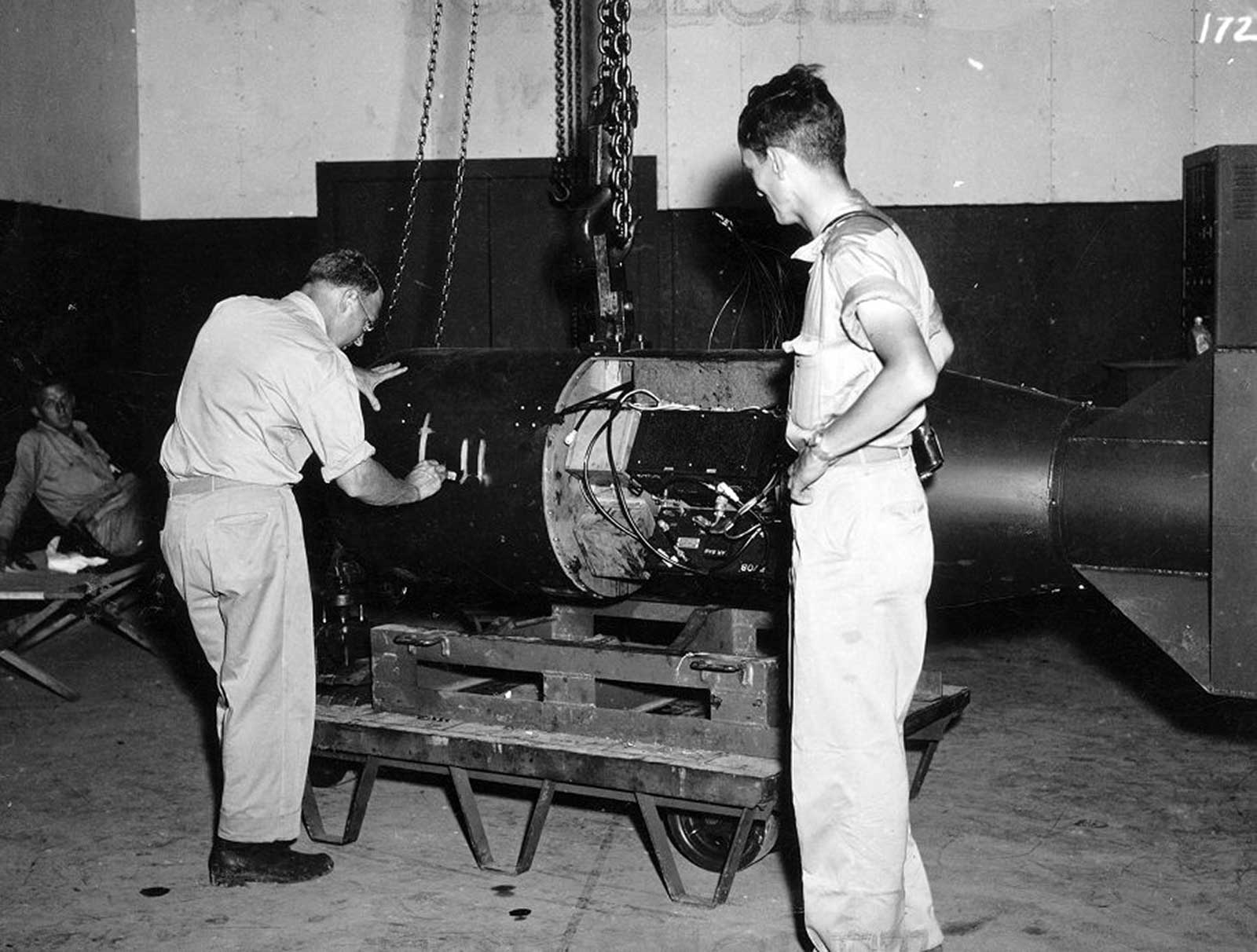Designs of Two Bombs
The Manhattan Project produced two different types of atomic bombs, code-named Fat Man and Little Boy. Fat Man, which was dropped on Nagasaki, was the more complex of the two. A bulbous, 10-ft. bomb containing a sphere of the metal plutonium 239, it was surrounded by blocks of high explosives that were designed to produce a highly accurate and symmetrical implosion. This would compress the plutonium sphere to a critical density and set off a nuclear chain-reaction. Scientists at Los Alamos were not entirely confident in the in the plutonium bomb design, so they scheduled the Trinity test.

The Little Boy type of bomb, which was dropped on Hiroshima, had a much simpler design than the Fat Man model that had been tested at Trinity. Little Boy triggered a nuclear explosion, rather than implosion, by firing one piece of uranium 235 into another. When enough U235 is brought together, the resulting fission chain reaction can produce a nuclear explosion. But the critical mass must be assembled very rapidly; otherwise, the heat released at the start of the reaction will blow the fuel apart before most of it is consumed. To prevent this inefficient pre-detonation, the uranium bomb uses a gun to fire one piece of U235 down the barrel into another. The bomb's gun-barrel shape was believed to be unquestionably reliable and had never been tested. In fact, testing was out of the question since producing Little Boy had used all of the purified U235 produced to date; therefore, no other bomb like it has ever been built.
Detonated by a mechanism that resembled a cannon, Little Boy had a muzzle or target that was a hollowed-out subcritical mass of uranium. The cannon ball was another subcritical mass of uranium, which fit perfectly into the hollow of the target as a plug. The plug was propelled down the cannon barrel by several thousand pounds of high explosive. When it hit, the combination of compression and increased mass pushed the uranium to the supercritical level and the bomb went off.